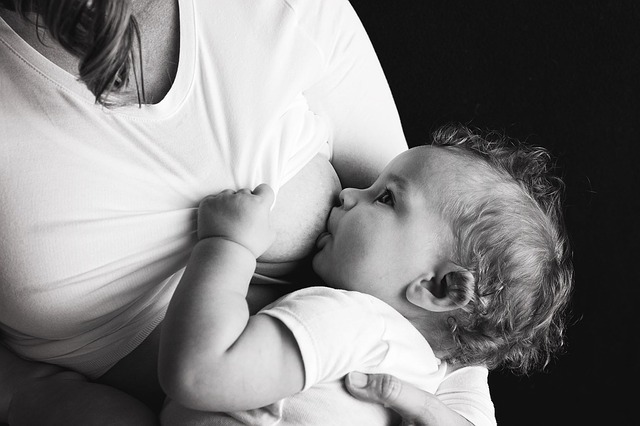“Bottles fill his stomach, but breastfeeding fills his soul.”
– Diane Wiessinger
The feeling of becoming parents is unexplainable, and especially for a mother, it is a lot more than just contentment and fulfillment alone. A new mother has tons of responsibilities that come with the baby. Mothers are accountable for the finest upbringing of their children. As she enters into motherhood, breastfeeding becomes part of the identity of women.
A new mother feeds her baby the very first meal, which is full of nutrition. This means breastfeeding for the majority of women. Even though breastfeeding might seem easy, you can still fret over supplying your infant with the right nutrients. And you presumably may have a dozen questions about how everything functions.
Our greatest suggestion is to loosen up; you and your child will ultimately be used to it. To encourage you, we have made a list of breastfeeding tips that will provide you with the best nursing advice.
1. Munch well, Mama
You’re what you consume, and it’s crucial for you so your little one can get a nutritious supply of milk to eat. Although you don’t need to strain yourself, a balanced postpartum diet is essential for your achievement in nursing. Firstly, drink a lot of water. Your body works hard to generate the milk for the baby, which is why you may always be thirsty for water. Aim to drink eight glasses of water each day to build up the milk supply and keep you hydrated. Second, eat an evenly balanced diet. Devour those portions of protein, calcium, whole grain, and fruits and vegetables to ensure that you are stuffed properly. Add healthy fats to your diet. Much healthy fats are needed for brain functioning, particularly omega-3 fatty acids found in fish with low mercury and DHA-enriched eggs.
Third, don’t skip your vitamins. Continue to take it until breastfeeding has been fully completed. You can also continue to take your DHA pregnancy top-up essential for the health and wellbeing of a new mother.
2. Lactation should be comfortable, not painful
Breasts are your number one asset when it comes to breastfeeding. For new moms, it helps prevent many infectious diseases in the baby and provides it full nutrition. However, please note that you shouldn’t be breastfeeding more than needed. What happens due to over breastfeeding is Mastitis. It is when certain germs reach the milk canals via nipples and make them sore. This occurs more often to the moms who find it difficult to breastfeed their babies. The soreness around the breasts can be painful. To avoid Mastitis, you can pump the milk to feed the baby. The doctor will also prescribe you some antibiotics that will help in reducing the pain and soreness. It just doesn’t mean they should be uncomfortable because your breasts are functioning super hard. After every nursing practice, lanolin cream used may aid. But above all, modify your lactation practices and ensure a proper latch for the baby.
3. Assist yourself with the best consultation
You aren’t the first one having trouble breastfeeding. Enlist the help you need for your breastfeeding experience to resolve problems. There are several consultants at the hospital or birth child care centers available. Some even make house calls. Join a mummy’s group in your area or take a breastfeeding lesson to enhance learning.
For additional support, please get in touch with the breastfeeding home visit services provided by some authentic consultants.
4. Drippy breasts aren’t a problem
If it sometimes leaves you feeling like you’re at a wet T-shirt competition when breastfeeding, don’t be ashamed you’re not alone. In fact, leaking breasts are lovely because they reveal a mom’s natural need to feed a baby, but they are no less chaotic. If it sometimes leaves you feeling like you’re at a wet T-shirt competition when breastfeeding, don’t be ashamed you’re not alone. In fact, leaking breasts are lovely because they reveal a mom’s natural need to feed a baby, but they are no less chaotic.
You may begin to leak before feeding your baby, listening to the baby’s soothing voice, or even drooling over a picture of your baby boo. Careful planning can help with your leaky breasts, and it includes:
Keep a bunch of nursing pads to avoid.
Place napkins below when you sleep so that you do not need to change your bedsheets in the morning if there’s a leakage problem at night.
Wear dark colors, so the leaks don’t peek out if they appear.
Don’t just pump too hard. Excess pumping will not help leaky breasts to stop. Nonetheless, it actually only boosts your production and aggravates the problem.

5. Quality Pump matters
Pumping breast milk is something every Mama should do to make sure she is not breastfeeding her baby all the time. Pumping milk has its own perks, and you get some time to relax if the milk has already been extracted before. There are two types of manual and automatic pumps with a single or double pumping ability.
The efficiency of each pump can distinguish between an incredibly simple and annoying experience. A double breast pump cut down the time needed to express milk from both breasts. A double breast pump is generally thought to be a great way to promote the growth of your prolactin hormone, too, while making it an easy and timely experience for mothers. A quality pump really matters if you want to pump more milk at a time.
6. Posture at ease
Deciding on a lactation position, which works best for you, makes lactation much easier. Select your favorite fit with a few experiments until you adjust yourself properly. Firstly, you can lay back and breastfeed. Lie down with supporting head, neck, and shoulders. Put the entire front of the baby on your entire front and let the work begin. On your bare breast, put the baby’s cheek.
Second, Breastfeed the baby as you lean it in your lap, with the head of your baby in the elbow. You can use pillows to raise the head to the level of the nipple to breastfeed the baby properly.
The third is the crossover hold position. Keep your baby’s head from the presently nursing breast with the opposite hand. Lastly, the side Lying position is the most convenient in the middle of the night—mom and child, both on their sides, facing each other.
Endnotes
We know that breastfeeding can sometimes be immense, but the tips mentioned above in practice will help you to enjoy your child with breastfeeding. So, take into account the needs of your child, be content and satisfied. Assess the signs of good breastfeeding and try to remain hydrated.
Nothing’s wrong with asking for assistance.
In the beginning, breastfeeding can be a sentimental rush, but you and your baby are likely to hang on with a bit of time and dedication. So get faith! Since this is a good way to feed and bind your child, it’s worth the hassle.
Remember. When you follow these guidelines, your baby will continue to flourish right before your eyes!

